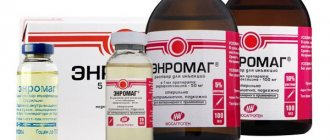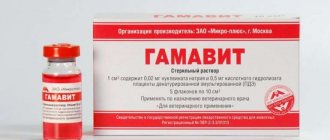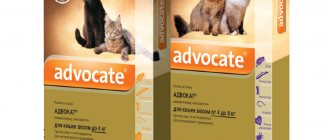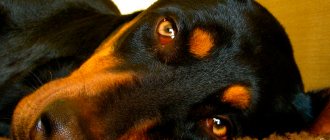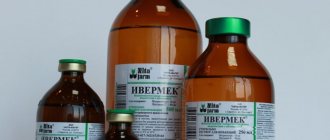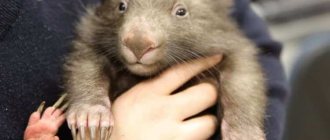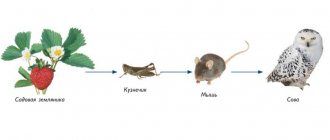general information
Creolin is an oily liquid that, when mixed with water, forms a milky-white emulsion with a shade of gray and a specific odor. The medicine is packaged in vials, bottles, canisters, and barrels with a capacity of 50 g to 200 kg. Varieties of the drug are used according to the scheme:
| Kreolin D | Phenolic-free coal tar creolin | Creolin X |
| Disinfection of production premises | Treatment of sheep psoroptosis and disinfection of production premises | Treatment of sheep psoroptosis; extermination of ectoparasites of cattle, pigs, birds, fur-bearing animals, rabbits. Disinfection and disinfection of poultry premises. Treatment of pasture animals against dipterous blood-sucking insects |
PHARMACOLOGICAL PROPERTIES
2.1. Phenolic-free coal creolin has an acaricidal effect on the causative agents of psoroptosis in sheep (goats), and has a long-lasting residual effect on the skin and hair. It also has a wide spectrum of antimicrobial action against gram-positive and gram-negative bacteria, fungi of the genus Candida. In terms of the degree of impact on the animal body, phenolic-free coal creolin belongs to hazard class 3 according to GOST 12.1.007-76 (moderately hazardous substances), in recommended doses it does not have a local irritant or allergenic effect, and does not have a teratogenic or embryotoxic effect.
Kreolin D
The drug is toxic to animals because it contains 3.5% oxybenzene (phenol). The active component with bactericidal activity, naphthalene, is contained in a concentration of 11.5%.
The cost of a 500 ml bottle in July 2022 was 215 rubles.
The components of the drug have high bactericidal activity. To disinfect livestock buildings and auxiliary premises, a working solution is prepared, which is sprayed in the absence of animals using specialized units.
Preventive treatment is carried out with a 3% emulsion with a consumption rate of 0.5 l/m2 and exposure time of 3 hours. For forced treatment, use a 3.5% solution. Exposure and consumption of the working emulsion are the same as for preventive sanitation.
The disinfectant is stored for 3 years at temperatures from –25 to +40 °C.
PERSONAL PREVENTION MEASURES
4.1. When working with phenol-free coal tar Creolin, follow the general rules of personal hygiene and safety precautions provided for when working with medicines. 4.2. It is prohibited to use containers containing phenol-free coal tar Creolin for domestic purposes. Containers contaminated with medicine are neutralized by filling them with a 3-5% solution of soda ash for 5-6 hours, after which they are washed with water. Residues of the drug are neutralized with a 5% solution of caustic alkali or bleach (suspension in water 1:3). The neutralized residues of phenol-free coal coal Creolin and wash water after processing containers and workwear are collected in a concrete tank and treated with bleach (500 g per 10 liters of waste). 4.3. If phenol-free coal tar Creolin gets on people's skin, it must be washed off with plenty of soap and water. If a solution of phenol-free coal tar Creolin gets on the mucous membranes and eyes, rinse them abundantly with water, then with a 2% solution of baking soda and consult a doctor. 4.4. While working with Creolin, phenolic-free coal is not allowed to eat, smoke, or drink. Maintenance personnel are not allowed into the premises during aerosol treatments. At the end of the work, wash boots and gloves, as well as used containers and decontamination equipment with water, wash your face and hands with warm water and soap. 4.5. Phenolic-free coal tar creolin should be stored out of the reach of children. 4.6. It is forbidden to use phenol-free coal tar Creolin after its expiration date.
Recommended for registration in the Russian Federation by the Federal State Institution "VGNKI". Registration number: PVR-5-1.5/01552.
Phenolic-free coal tar creolin
The active ingredient is naphthalene 11.5%. Has a prolonged acaricidal effect.
The cost of a half-liter bottle in July 2022 is 212 rubles.
In dry, warm weather, after shearing, sheep are treated against the psoroptes skin mite. Sheep are not fed for 5 hours or longer. The floating pit is filled with water and creolin is added to form a 2% emulsion. In order for the drug to destroy ectoparasites, the animal must remain in the pool for 2 minutes. Each animal is dipped with its head on which ticks collect. The sheep are kept near the pit for 15 minutes and given time to drain the acaricidal emulsion. Dried sheep are released to pasture.
Lactating ewes, whose milk is going to be used for food production, as well as weakened and clinically ill ones, are not bathed. The waiting period for meat is 1 day.
If necessary, phenol-free creolin is used to disinfect premises in the same manner as Creolin D. The drug is stored for 2 years at temperatures above –25 °C.
Composition and purpose
The drug Creolin has a third degree of danger, so it should be used with great caution. It includes:
- naphthalene;
- rosin;
- soap;
- ichthyol;
- caustic alkali;
- coal oil.
Thanks to the last component, the solution has long been widely used as an effective insecticide . With its help, in the 20s of the last century, nematodes and aphids on crops, mites, butterflies and bedbug eggs began to be destroyed almost all over the world.
Creolin X
The combined preparation was prepared by adding 2.5 or 5% cypermethrin to phenol-free coal creolin.
The cost of a 0.5 liter bottle in July 2022 was 449 rubles.
Cypermethrin is a second generation pyrethroid. Destroys subcutaneous mites and insects. The drug is dosed according to the content of cypermethrin. That is, the consumption of creolin-X 5% is 2 times less than 2.5%.
The drug is used on the following types of animals:
- sheep;
- cattle;
- pigs;
- bird;
- fur-bearing animals and rabbits.
Kreolin-X in sheep breeding
In dry weather, 3 or more days after shearing, at air temperatures >18 °C, sheep are purchased against psoroptosis. Animals are not fed for 10 hours. Sheep should be given water 2–3 hours before the procedure. The floating bath is filled with water, creolin-X is added to form a 0.005% cypermethrin emulsion. That is, one part of creolin-X 5% per 1000 volumes of water is added to the bathing pit. If a 2.5% drug is used, the ratio is 1:500. For the pyrethroid to kill ticks, the animal must remain in the pit for 1 minute. Each sheep is immersed head-first in the cup emulsion to completely remove ectoparasites. The animals are kept near the pit for 10–15 minutes, and the emulsion is allowed to drain. Preventive purchase is carried out once. For therapeutic purposes, the treatment is repeated after 10–14 hours.
If there is a need to bathe lambs less than a month old, prepare a separate bath. Dairy ewes, as well as weak and sick ones, are not bathed. The waiting period for meat is 15 days.
Kreolin-X in cattle breeding
When attacked by ectoparasites, prepare a working emulsion of the same concentration as when buying sheep. The cattle are sprayed, moistening the entire body, especially the lesions, at the rate of 1.5–3.0 liters per animal. For sarcoptic mange, treatment is repeated after 7–10 days.
On the pasture, animals are sprayed with a solution of 0.008% concentration against mosquitoes, flies and midges - 0.32 g of 2.5% creolin-X / 100 l of water. For calves up to one year old, 0.25 liters are used, for young animals over 12 months old - 0.5 dm3. Depending on the number of parasites, they are treated from twice a day to once a week. Milk can be used for food purposes 12 hours after processing. Meat - after 25 days.
Kreolin-X in pig farming
Used for lice and sarcoptic mange. Prepare a concentrated emulsion - 10 ml of 2.5% creolin-C/l of water or 5 ml of 5%. Treat twice, every 7–10 days. The consumption rate for 1 pig is 0.3–0.5 l. Pension for meat - 25 days.
If necessary, sanitize the premises in the absence of animals with a 0.005% cypermethrin emulsion. The consumption of the working solution is 0.3 l/m2. After an hour and a half exposure, the room is ventilated for 60 minutes. Feeders and drinking bowls are thoroughly washed.
Creolin-X in poultry farming
Chickens are treated if they are attacked by ticks, bedbugs, or feather eaters. After collecting the eggs, the birds are sprayed with 0.005% emulsion at the rate of 1.5–3.0 liters per 100 hens. Sanitation is repeated after 8–10 days. The cut-off for meat is two days.
During a technological break, the room is treated twice. Consumption of working emulsion is 0.15 l/m2. To kill flies, the walls of the poultry house are sprayed with a 0.005% solution in an amount of 0.075 l/m2.
Kreolin-X in fur farming, rabbit breeding
Used for notoedrosis, sarcoptic mange, otodectosis, psoroptosis. Animals are bathed in a solution of 0.005% cypermethrin concentration. If a 5% solution is used, then 0.5 ml of concentrate is added to 1 liter of water, if 2.5%, then 1 ml. The bathing is carried out in a warm room, the animal is immersed in the solution with its head 3 times for two minutes, and the fur is wrung out. For therapeutic purposes, the treatment is repeated every other week. Sheds are sanitized according to the same scheme as pig breeding premises. Restriction on rabbit meat - 15 days.
An alternative processing method is to use an oil solution of Creolin-X. Add 0.5 or 1 cm3 of creolin of 5% or 2.5% concentration to 1 liter of heated vegetable or vaseline oil. If the ears are affected, the emulsion is injected 1-2 cm3 into each ear, even if there are no clinical signs in the second organ. Sanitation is repeated 6–10 days later.
The drugs are stored for 2 years at temperatures from –35 to +40 °C.
Directions for use and indications
Creolin-X must be tested on several animals before use to determine the presence of an allergic reaction. If after 24 hours no signs of toxicosis are found in the animals, you can begin to treat the entire livestock.
Treatment of livestock must be carried out under the supervision of a veterinarian and strictly according to the instructions. The volume of the required amount of medicine should be calculated by a specialist.
Indications
Creolin-X is used for the following diseases:
- Sheep psoroptosis (treatment and prevention);
- Psoroptosis, chorioptosis, sarcoptic mange, siphunculatosis in cattle (prevention and treatment);
- Sarcoptic mange and hematolinosis in pigs;
- Chicken and Persian mites in birds, and also as a disinfectant for premises where poultry are kept;
- Sarcoptic mange, notoedrosis, otodectosis in foxes, arctic foxes and other fur-bearing animals;
- Psoroptosis and notoedrosis of rabbits;
- Against blood-sucking insects and pasture flies;
The medication is often prescribed by veterinarians to treat parasitic diseases in pets. For example, dogs often suffer from scabies, and to cure it, it is necessary to make a 2-3% concentrate of the medicine according to the instructions. Heat the resulting liquid to 50 degrees, immerse the dog in the solution for several minutes. If the dog is a large breed, scoop the solution into a ladle and pour it over the dog, avoiding getting the medication into the nasal and oral cavity. Afterwards, the animal must be taken out, wrapped in a large towel and held for 15 minutes. Then the dog must be rinsed with warm water.
Contraindications and side effects
side effects have been identified when using this drug. If animals are individually intolerant to some components, skin irritation, excessive lacrimation, and salivation may occur. If these symptoms are detected, the drug should be washed off with soap and water. Overdose symptoms were not identified when testing Creolin-X.
Contraindications and special instructions
The drug is strictly contraindicated in animals that are on the verge of exhaustion and infected with infectious diseases. Contraindicated in pregnant females, as well as in animals with hypersensitivity to certain components of the drug.
You should remember some instructions after using Creolin-x:
- slaughter of cattle is permitted 15 days after the last use of the drug;
- slaughter of pigs is allowed 25 days after the last use;
- poultry slaughter is allowed 48 hours after the use of Creolin-X;
If a necessary measure has arisen in slaughtering an animal, and the recommended deadlines have not yet passed, the meat cannot be eaten. It can be used as animal feed or for making meat and bone meal. Eggs from processed chickens can be eaten immediately.
A person in contact with the drug needs special clothing and personal protective equipment: a robe, a rubber apron, rubber high boots, a headdress (scarf), a respirator. There should be first aid kits in case of first aid. During treatment, contact with food, drinking and tobacco products is completely excluded. Contact with the drug should last no more than 6 hours. After completing the treatment procedure, protective clothing must be removed, hands and face should be washed with running water. If Creolin solution gets on the skin, it must be rinsed with water or carefully treated the infected area of skin with a weak alkali solution.
If Creolin gets into the oral cavity, and then into the body, the victim must rinse his stomach. Give the victim a weak solution of potassium permanganate and induce vomiting. If a person who has been treated with Creolin exhibits signs of poisoning (dizziness, nausea, weakness), it is necessary to immediately consult a doctor.
The medicine is stored for 12 months from the date of manufacture. It must be stored out of the reach of animals and children, at a temperature not exceeding 25 degrees Celsius.
Creolin: instructions for use for people
Creolin, as mentioned above , is considered to have antiparasitic and antiseptic properties. In addition, it can be used to stop bleeding and stop the inflammatory process. This drug is prescribed to people in case of gynecological diseases, when a fungal infection appears on the nails, for intestinal inflammation and even for cirrhosis. Today, medicine widely uses Creolin in the treatment of fungal infections and even human cancer. Dermatologists recommend Crinolin for eczema, scabies, and psoriasis. Before starting treatment, you must carefully study the instructions for use.
Treatment of human diseases with Creolin
When psoriasis , treatment takes place in several stages:
- The suspension must be diluted with water;
- Soak a cotton swab in the medicine and lubricate the deformed surface;
- Leave the solution on the skin for 5 minutes;
- Rinse off the solution with warm water, wipe the surface with a napkin;
- Lubricate the treated area with cream;
It should be remembered that such treatment must be carried out once a day. The course of treatment should not exceed 5 days. Undiluted Creolin is dangerous for the skin.
Fungal infection is treated with Crenolin with the following recommendations:
- Apply the solution exclusively to the affected area;
- Avoid contact with healthy skin;
- Apply with a cotton swab;
- The dosage cannot be exceeded (1 procedure once a day).
The course lasts no more than 2 months. As soon as the healthy nail grows back, the treatment can be considered complete.
Is therapy effective?
Since all drugs for humans are tested first on animals, it can be assumed that products that are effective for them will also be suitable for humans.
If you follow the recommended regimens, there will be no side effects from using Creolin. Supporters of the product are convinced of its effectiveness and safety. Taking the substance orally is not recommended, so you need to approach cancer treatment carefully and monitor the condition.
The use of Creolin for humans has many positive reviews from those who have been using the drug for many years to combat animal and human diseases, as well as for prevention. The use of veterinary medicine by people is justified by its effectiveness, rapid positive dynamics and low price.
Contraindications to the use of Creolin
Veterinary use of Creolin indicates the following contraindications, which should also be followed when used for humans:
- pregnancy and breastfeeding,
- infectious diseases,
- children under 18 years old,
- low immunity, pain, weakening of the body caused by various reasons.
Read also: Varnishes for nail fungus Review of popular drugs
The drug is classified as a third group of hazardous substances.
Treatment of farm animals and birds
In veterinary practice, the drug acts as a preventive and therapeutic measure for the following diseases.
- Siphunculatosis or lice
- Sarcoptic mange is a contagious pruritic skin disease caused by a small mite.
- Chorioptosis is an invasive pathology caused by carpet beetles.
- Otodectosis or ear mites.
- Notoedrosis - pruritic scabies.
- Psoroptosis is cutaneous scabies. Accompanied by rapid hair loss and a sharp decrease in productivity.
- Hematopinosis is an invasive disease, lice in pigs (sources and vectors).
Creolin solution is used to treat agricultural animals against pasture flies and blood-sucking pests.
Carry out the treatment in dry, windless weather. The optimal air temperature is 18-20 degrees. Animals are not fed for 5-8 hours. It is allowed to water the sheep within 2-3 hours. Be sure to shear the sheep before the operation (3 days before sanitization).
Treatment is carried out by bathing in a floating bath (pit). Proportion: 1 part 2.5% Creolin per 10 volumes of water. Each individual is immersed in the bath for 1-2 minutes, and the head is carefully washed from the ladle.
Then the animals are kept next to the pit for 10 minutes until the emulsion completely drains. Dried sheep are released back to pasture. Individuals can be slaughtered 15 days after treatment.
The concentrate of the working emulsion is left the same as for sheep: 1 to 10. Individuals are sprayed, thoroughly moistening the body. Particular attention is paid to lesions, areas near the ears and tail. Calculation for 1 animal – 1.5-3 liters.
Pigs and goats
Concentrated emulsion – 50 ml per 50 liters of water. Animals are sprayed, the consumption rate is 0.3-0.5 l per individual. The ears of individuals are subject to especially careful processing. The withdrawal period (waiting period) for meat is 25 days.
Fur animals
Animals are bathed in a working solution: 0.5 ml of product per 1 liter of water. The procedure is carried out in a warm room. The animal can be immersed in the solution with its head, repeat 3 times. Wring out the fur. For medicinal purposes, repeat the treatment after 7 days. Pension for meat – 15 days.
Birds
Birds are sprayed with diluted Creolin. The proportion of the working solution is 1 ml per 3 liters of water. Consumption rate: 3 liters per 100 laying hens, 5 liters per 50 large birds (geese, turkeys). Sanitation will be repeated after 8-10 days. The birds are not slaughtered for 2 days after treatment.
For domestic pigeons, to prevent Newcastle disease (paramyxovirus or whirligig), it is recommended to feed the bird with a creolin solution once a month at the rate of 1 drop per 1 liter. water. Drink for 5 days!
Creolin is an effective veterinary remedy for the destruction of parasites, insects, and fungi. Consumption rates depend on the type and weight of the animal. It is recommended to coordinate the use and dosage with your veterinarian.
The Russian enterprise Veterinary Preparations produces the following varieties of creolin:
- creolin D;
- phenol-free coal tar creolin;
- creolin X.
Treatment of premises and agricultural equipment
Disinfection of pens, sheds, and auxiliary premises is carried out only in the absence of animals. Before processing, the remaining feed and water are removed, and the milking equipment is tightly covered with polyethylene. The working solution is sprayed around the perimeter. Animals are not allowed into the treated premises for at least 12 hours.
For routine preventive treatment, use a 3% undiluted emulsion. Consumption rate – 0.5 l per sq.m. Action time – 2 hours. Then the room needs to be well ventilated. Forced treatment – 3.5% solution. The expense is the same. The equipment is soaked in Creolin (3% or 3.5%) for 1-3 hours, then rinsed and dried. The product is diluted in water, proportion 1:5, feeders and drinking bowls are thoroughly washed.
special instructions
When using Creolin, you should adhere to the following rules:
- do not use after expiration date,
- For each use, prepare a fresh solution, discard the remainder,
- prepare the recommended concentration, do not use pure preparation,
- keep away from children
- do not forget that the product is toxic,
- when using the product, it is forbidden to eat, drink,
- containers from Kreolin cannot be used for other purposes,
- In case of contact with eyes, rinse with soda.
The drug is prepared for external use.
